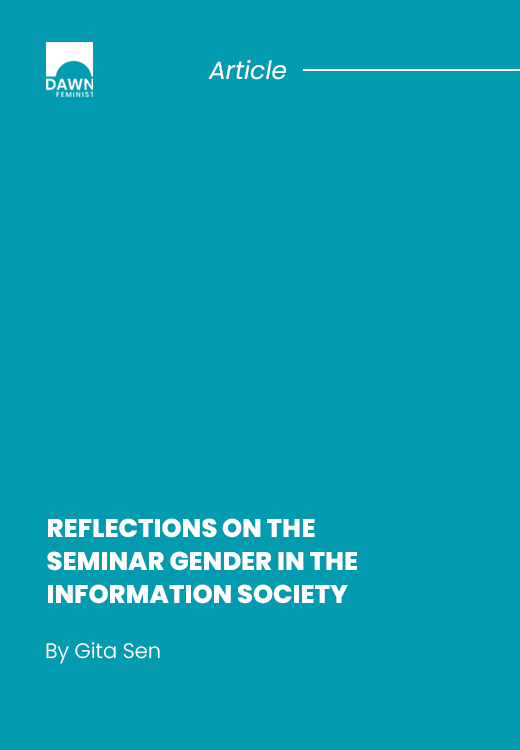These reflections constitute a chapter of the book “Gender in the Information Society: Emerging issues” edited by Anita Gurumurthy, Parminder Jeet Singh, Anu Mundkur and Mridula Swamy; published by the United Nations Development Program (UNDP) and the Asia-Pacific Development Information Programme (APDIP).
I would like to begin my comments by stating that these are disparate and somewhat disjointed remarks reflecting on a number of the issues that have come up during the two days of this conference. I want to start by putting in a caveat about the women’s movement since an important issue in the context of this seminar is about the place and role of women’s movements in the information society. We know there is much discussion about who is and is not part of the women’s movement, what it consists of, whether it is one or multiple movements, and so on. Nonetheless I am not going to engage here with these questions. I am simply going to keep talking about ‘the’ women’s movement, assuming that you have a sense of the amorphous ‘something’ or ‘some things’ that I am talking about. The women’s movement is a part of the larger space in which we struggle to transform our world, and those who inhabit this space have certain characteristics that are important for us to recognize as we try to move forward in this discussion.
We, in the women’s movement, tend to have fairly strong Luddite tendencies. On the one hand, we don’t like technology or the idea of technology. This is odd because, in our personal and collective lives, we actually like technology a fair amount and we use it all the time and quite effectively! But often we don’t like the concept, the idea of technology. In that sense, we have a very old, Luddite notion of technology that is filled with deep suspicion of what it might and might not do. This may be quite reasonable given the ambiguities of what technology has been and has meant for women through history. But it certainly colours our inherent approach and it colours what one might call our ‘default position’.
Having said this, I want to argue that we need to recognize that we are living through a new industrial revolution and it is really about the nature and implications of that revolution that we are arguing, due to which we have as much ambivalence and confusion about technology as we do today. This is not just simply technological change, with a small ‘t’, as has been said a million times in the last two days of the seminar. It is something that touches upon so many different aspects that we do not quite know how each of these pieces of the larger puzzle of the new industrial revolution fit together.

